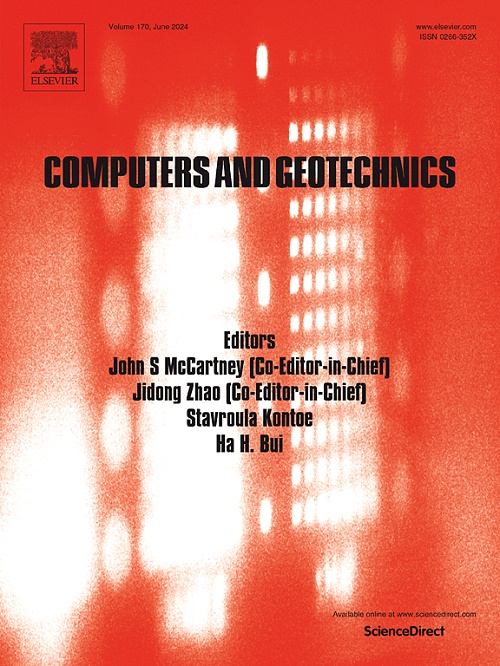SchemaGAN: A conditional Generative Adversarial Network for geotechnical subsurface schematisation
IF 5.3
1区 工程技术
Q1 COMPUTER SCIENCE, INTERDISCIPLINARY APPLICATIONS
引用次数: 0
Abstract
Subsurface schematisations are a crucial geotechnical problem which generally consists of filling substantial gaps in subsurface information from the limited site investigation data available and relying heavily on the engineer’s experience and occasionally geostatistical tools. To address this, schemaGAN, a conditional Generative Adversarial Network (GAN) to generate geotechnical subsurface schematisations from site investigation data is introduced. This novel method can learn complex underlying rules that govern the subsurface geometries and anisotropy from a big database of training cross-sections, and can produce subsurface schematisations from Cone Penetration Tests (CPT) in an insignificant timeframe. To test and demonstrate the performance of schemaGAN, a database of 24,000 synthetic geotechnical cross-sections with their corresponding CPT data was created, including spatial variability and gradually spatially varying layers. After training, the effectiveness of schemaGAN was compared against several interpolation methods, and it is seen that schemaGAN outperforms all other methods, with results characterised by clear layer boundaries and an accurate representation of anisotropy within the layers. SchemaGAN’s superior performance was confirmed through a blind survey, and in two real case studies in the Netherlands, where the model demonstrates better predictive accuracy for known CPT data.
土工地下图式的条件生成对抗网络
地下示意图是一个关键的岩土工程问题,它通常包括从有限的现场调查数据中填补地下信息的大量空白,并严重依赖工程师的经验,有时也依赖地质统计工具。为了解决这个问题,介绍了schemaGAN,一个条件生成对抗网络(GAN),用于从现场调查数据生成岩土地下图式。这种新方法可以从训练截面的大数据库中学习控制地下几何形状和各向异性的复杂潜在规则,并可以在很短的时间内从锥突测试(CPT)中生成地下示意图。为了测试和证明schemaGAN的性能,创建了一个包含24,000个合成岩土截面及其相应CPT数据的数据库,包括空间变异性和逐渐空间变化的层数。经过训练,将schemaGAN的有效性与几种插值方法进行了比较,可以看出schemaGAN优于所有其他方法,其结果具有清晰的层边界和层内各向异性的准确表示。SchemaGAN的卓越性能通过一项盲测和荷兰的两个真实案例研究得到了证实,该模型对已知CPT数据的预测精度更高。
本文章由计算机程序翻译,如有差异,请以英文原文为准。
求助全文
约1分钟内获得全文
求助全文
来源期刊

Computers and Geotechnics
地学-地球科学综合
CiteScore
9.10
自引率
15.10%
发文量
438
审稿时长
45 days
期刊介绍:
The use of computers is firmly established in geotechnical engineering and continues to grow rapidly in both engineering practice and academe. The development of advanced numerical techniques and constitutive modeling, in conjunction with rapid developments in computer hardware, enables problems to be tackled that were unthinkable even a few years ago. Computers and Geotechnics provides an up-to-date reference for engineers and researchers engaged in computer aided analysis and research in geotechnical engineering. The journal is intended for an expeditious dissemination of advanced computer applications across a broad range of geotechnical topics. Contributions on advances in numerical algorithms, computer implementation of new constitutive models and probabilistic methods are especially encouraged.
 求助内容:
求助内容: 应助结果提醒方式:
应助结果提醒方式:


